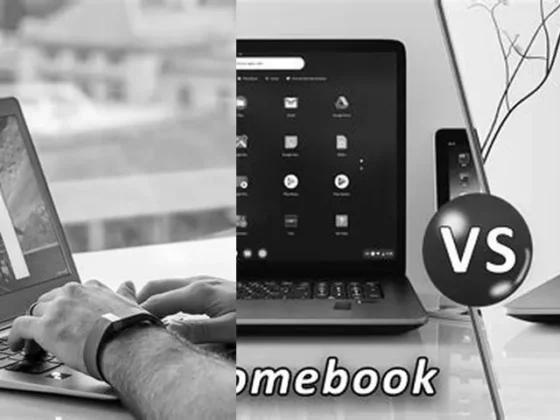Why Chromebooks Are Not Good For Students: Are Chromebooks really the best choice for students? Many educators and parents have been singing their praises, but today we’re going to take a closer look at why Chromebooks may not be as good for students as they seem. From their limitations to the alternatives available, we’ll delve into the drawbacks of relying on these devices in the classroom. So, grab a seat and get ready to explore the world beyond Chromebooks in education. It’s time to uncover the truth and find the best fit for our young learners.
The Drawbacks of Chromebooks for Students
In the realm of education technology, Chromebooks have become a common staple. However, there are several reasons to reconsider their role in the classroom. While they offer a range of conveniences, Chromebooks also present significant drawbacks that could hinder a student’s learning experience.
Distractions at Your Fingertips
One of the primary concerns with Chromebooks in an educational setting is the ease of access to distractions. Games and non-educational apps can be just a click away, leading students away from their studies. The temptation to drift from assigned tasks to entertainment is a challenge for even the most disciplined students.
Fact: Chromebooks provide distractions for students, such as games, making it difficult for them to focus.
Reduced Social Interaction
The rise of digital devices has inadvertently led to the decline of in-person social interactions. Chromebooks, while facilitating online communication, do not support the same level of interaction as hands-on learning does. This lack of direct social engagement can be detrimental to the development of soft skills such as teamwork, verbal communication, and empathy.
Fact: Using Chromebooks means less direct social interaction for students compared to hands-on learning.
Difficult to Repair and Environmentally Unfriendly
Chromebooks are notoriously difficult to repair. This not only poses a problem for schools in terms of maintenance and costs but also contributes to electronic waste. When a Chromebook breaks, the often most cost-effective solution is to replace it, which is neither sustainable nor economically prudent in the long run.
Fact: Chromebooks are difficult to repair, leading to harmful waste and significant replacement costs.
Limited Software Compatibility
The reliance on web-based applications and cloud services means that Chromebooks are not compatible with a wide array of software. This limitation can be a significant hindrance in educational settings where certain specialized programs are necessary for learning and creativity.
- Chromebooks primarily rely on web-based applications and cloud services.
- They have limited functionality which can restrict the range of software available for students and teachers.
Comparing Chromebook and Laptop Capabilities
When it comes to choosing between a Chromebook and a standard laptop, one must consider their computing needs. Chromebooks, with their less powerful hardware, are not equipped to handle resource-intensive tasks like large projects or multitasking with numerous tabs.
Fact: Chromebooks are typically much less powerful than your standard laptop.
Furthermore, the absence of popular applications such as Photoshop can be a deal-breaker for students who require these tools for their studies.
Fact: You’ll miss out on some of the more popular apps, like Photoshop, so make sure you don’t need those before you buy a Chromebook.
Why Schools Favor Chromebooks
Despite these drawbacks, many schools continue to use Chromebooks. They are seen as an accessible way to introduce students to technology, offering opportunities to learn basic tech skills and engage in collaborative projects. Additionally, Chromebooks are generally more affordable than laptops, making them an attractive option for educational institutions with tight budgets.
Fact: From basic keyboarding skills to advanced ethics in online research, Chromebooks offer a chance for students at almost any grade level to experience and sharpen their knowledge of technology.
Delving Deeper into Chromebooks’ Limitations
Impact on Learning and Cognitive Development
The use of Chromebooks in classrooms has a profound impact on learning and cognitive development. The quick shift from educational material to games or social media can fragment students’ attention spans and undermine their ability to focus on complex tasks. This continuous partial attention could potentially impede the development of deep reading and critical thinking skills.
Technological Reliability and Access Issues
Another major concern is the reliability of Chromebooks when it comes to internet connectivity. Since Chromebooks depend on cloud services, any disruption in internet access can halt learning, leaving students without the necessary tools to continue their education effectively.
Privacy and Security Concerns
With the reliance on cloud-based services, privacy and security become paramount. Educational institutions must ensure that student data is protected, and Chromebooks must adhere to stringent security measures to prevent data breaches and maintain the confidentiality of student information.
Alternatives to Chromebooks in Education
Exploring Other Devices
When it comes to integrating technology into the classroom, there are alternatives to Chromebooks. Tablets, laptops, and even desktop computers offer different advantages, such as more robust software options, greater processing power, and better repairability.
Emphasizing Hands-On Learning
While technology can enhance education, there is still great value in hands-on learning. Schools can balance tech use with activities that encourage direct interaction and engagement with the physical world, fostering a well-rounded educational experience.
Customized Tech Solutions
Finally, schools could consider customized tech solutions that cater specifically to their educational goals and the needs of their students. By tailoring the technology used in classrooms, educators can provide a more focused and effective learning environment.
Concluding Thoughts
While Chromebooks have their place in educational settings, it’s crucial to recognize their limitations and the potential negative impact they can have on students’ learning experiences. By considering alternative devices and methods, educators can create a more balanced and enriching environment for their students.
As technology continues to evolve, so too must the strategies we employ in education. By staying informed and adaptable, we can ensure that we’re providing students with the tools they need to succeed, both within the classroom and beyond.
FAQ & Related Questions about Why Chromebooks Are Not Good For Students
Q: Which is better, a Chromebook or a laptop?
A: Chromebooks are typically less powerful than laptops and may not be able to handle big projects or multiple tabs at once. They also lack popular apps like Photoshop.
Q: Do Chromebooks provide distractions for students?
A: Yes, Chromebooks can provide distractions for students, such as games, which can make it difficult for them to focus on their studies.
Q: Does using Chromebooks mean less direct social interaction for students?
A: Yes, compared to hands-on learning, using Chromebooks may result in less direct social interaction for students.
Q: Why do schools use Chromebooks?
A: Schools use Chromebooks because they allow students to experience and improve their knowledge of technology, from basic keyboarding skills to advanced online research.
Q: Can a Chromebook last 10 years?
A: Yes, going forward, all Chromebooks will have a minimum support lifespan of a decade.
Q: Why are Chromebooks slow and laggy?
A: Chromebooks can become slow and laggy due to outdated software. It is important to regularly update the operating system, ChromeOS®, to the latest version to avoid lag.


